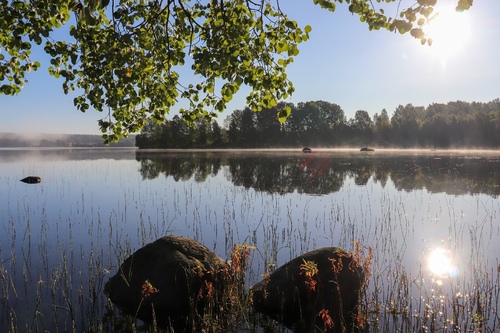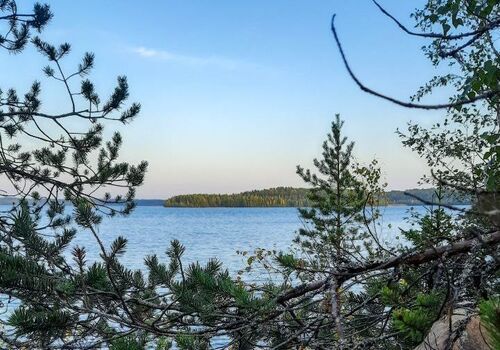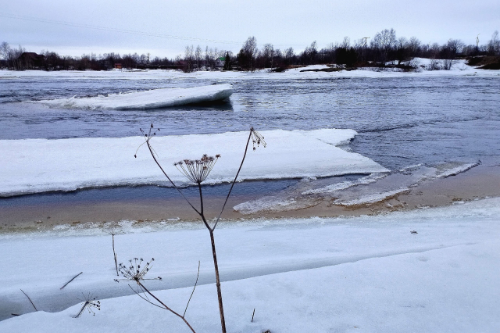Ichthyologists summarized the results of integrated hydrobiological and ichthyological studies of Lake Vashozero.What makes this lake interesting for scientists is that 1.3 million larvae of European whitefish, 940 thousand larvae of Ladoga vendace and 370 thousand larvae of Onego vendace were introduced there in 1933–1935.
The introduction was part of the efforts to raise the fishery productivity of water bodies. At that time, species from other reservoirs of our republic, as well as from Siberia and the Far East were introduced into rivers and lakes of Karelia. Few of them became established, one of the best known cases being the pink salmon, which became a new commercial species in the north. As a rule, the most successful were relocations within the region: valuable commercial fish, coregonids or salmonids, from broodstock lakes (donor lakes) were released into water bodies poorer in these resources.
According to biologists, a definitive assessment of a species' naturalization in a water body can only be made decades after it has been introduced.
– Naturalization is the last phase in the formation of a population. At first, the new species is introduced, after which, as a rule, an acclimation burst takes place - a sharp increase in abundance, which soon declines. In the process of adaptation, the species either dies out, e.g. due to predation or competition, or its numbers stabilize. The introduced individuals must produce offspring, which also need to reproduce. This will be an indication that the introduced species has become established. The environmental conditions may change, and the species has to survive through this too. Hence, it would be only be possible to assess how it has naturalized, i.e. become part of the ecosystem, after at least 50 years, - said Nikolai Ilmast, Doctor of Biology, Director of the Institute of Biology KarRC RAS.
Thus, among the salmonids introduced in Vashozero, only the Onego vendace, Coregonus albula, has become established. Scientists suppose that whitefish failed to get established in Vashozero for two reasons. Firstly, has a longer life cycle compared to vendace. Thus, vendace live 5-7 years on average and produce offspring already in the second year of life. Whitefish, on the other hand, matures only in the third to fifth year of life. Secondly, Vashozero is a relatively small body of water, and the whitefish were most likely fished out before they had a chance to reproduce.
The Russian Journal of Biological Invasions published an article by Nikolai Ilmast and Senior Researcher at the Institute of Biology KarRC RAS Yaroslav Kuchko, which reports the results of studies of the planktic fauna and feeding habits of vendace in Lake Vazhozero. The structure of trophic links in the lake has changed with the arrival of the new species. The diet of the vendace 95% consists of planktic crustaceans of the Cladocera and Copepoda groups. It may also comprise benthic organisms.
“Studies have demonstrated that the introduction of European vendace to Lake Vashozero has been successful, and that its naturalization has enriched the lake with a new species”, – the authors of the article remark.
– From the fishery point of view, this means that Karelia has gained one more reservoir with a harvestable vendace population, – Nikolai Ilmast summed up.
It is noteworthy that nowadays such introductions are possible only in exceptional cases, for example, following the death of a population. It has been proven that biological invasions (from Latin invasio - invasion, attack) can cause damage to the environment, human health or the economy. For instance, the unregulated introduction of smelt into Lake Syamozero in Karelia in the 20th century seriously affected the local vendace and whitefish populations. In 1995, Russia signed the Convention on Biological Diversity, which is designed to preserve the planet's biodiversity, including through the control of alien species of plants and animals.
Photo by A. Krivonozhenko / ILLH KarRC RAS
News

September 22, 2023
Ichthyologists assessed the outcomes of vendace introduction to Lake Vashozero, Kondopoga District
Specialists from the Institute of Biology KarRC RAS studied the state of hydrobiological communities, including the fish fauna, in Lake Vashezero in the Kondopoga District of Karelia. The commercial vendace species was artificially introduced into the lake, along with whitefish, in the 1930s. The outcomes of such an introduction can be assessed objectively only decades later. The conclusion of the scientists is that, unlike other species, the Onego vendance became successfully established and naturalized in Vashozero.
Specialists from the Institute of Biology KarRC RAS studied the state of hydrobiological communities, including the fish fauna, in Lake Vashezero in the Kondopoga District of Karelia. The commercial vendace species was artificially introduced into the lake, along with whitefish, in the 1930s. The outcomes of such an introduction can be assessed objectively only decades later. The conclusion of the scientists is that, unlike other species, the Onego vendance became successfully established and naturalized in Vashozero.
See also:

July 7, 2025
A successful introduction: the zander has settled down in Lake Sundozero and continues to spread
Scientists of the Institute of Biology KarRC RAS have published the results of long-term observations over the population of the zander (or pikeperch) introduced to Lake Sundozero more than a half-century ago. They confirm the species has become naturalized. Maintaining the population requires regulation of harvesting, protection during spawning, and tending of spawning grounds.
Scientists of the Institute of Biology KarRC RAS have published the results of long-term observations over the population of the zander (or pikeperch) introduced to Lake Sundozero more than a half-century ago. They confirm the species has become naturalized. Maintaining the population requires regulation of harvesting, protection during spawning, and tending of spawning grounds.

June 26, 2025
Ice-related phenomena on rivers emptying into the White Sea now last three weeks less than 60 years before
Ice on northern rivers now forms later while ice-off occurs earlier. Karelian scientists confirmed this having analyzed 64 years of marine and meteorological data from the estuaries of rivers draining into the White Sea along its western coast. Climate change has bit three weeks off the ice-covered period on these rivers. The reductions have been the most significant in the last 30 years, aligning with global warming trends in Arctic water bodies.
Ice on northern rivers now forms later while ice-off occurs earlier. Karelian scientists confirmed this having analyzed 64 years of marine and meteorological data from the estuaries of rivers draining into the White Sea along its western coast. Climate change has bit three weeks off the ice-covered period on these rivers. The reductions have been the most significant in the last 30 years, aligning with global warming trends in Arctic water bodies.

June 23, 2025
Citizen science and web technologies help researchers study insects of Karelia
More than 30 insect species not encountered in Karelia previously have been revealed by entomologists from KarRC RAS during their expeditions and using data communicated by active participants of the iNaturalist portal – an open platform for collecting biodiversity data.
More than 30 insect species not encountered in Karelia previously have been revealed by entomologists from KarRC RAS during their expeditions and using data communicated by active participants of the iNaturalist portal – an open platform for collecting biodiversity data.



